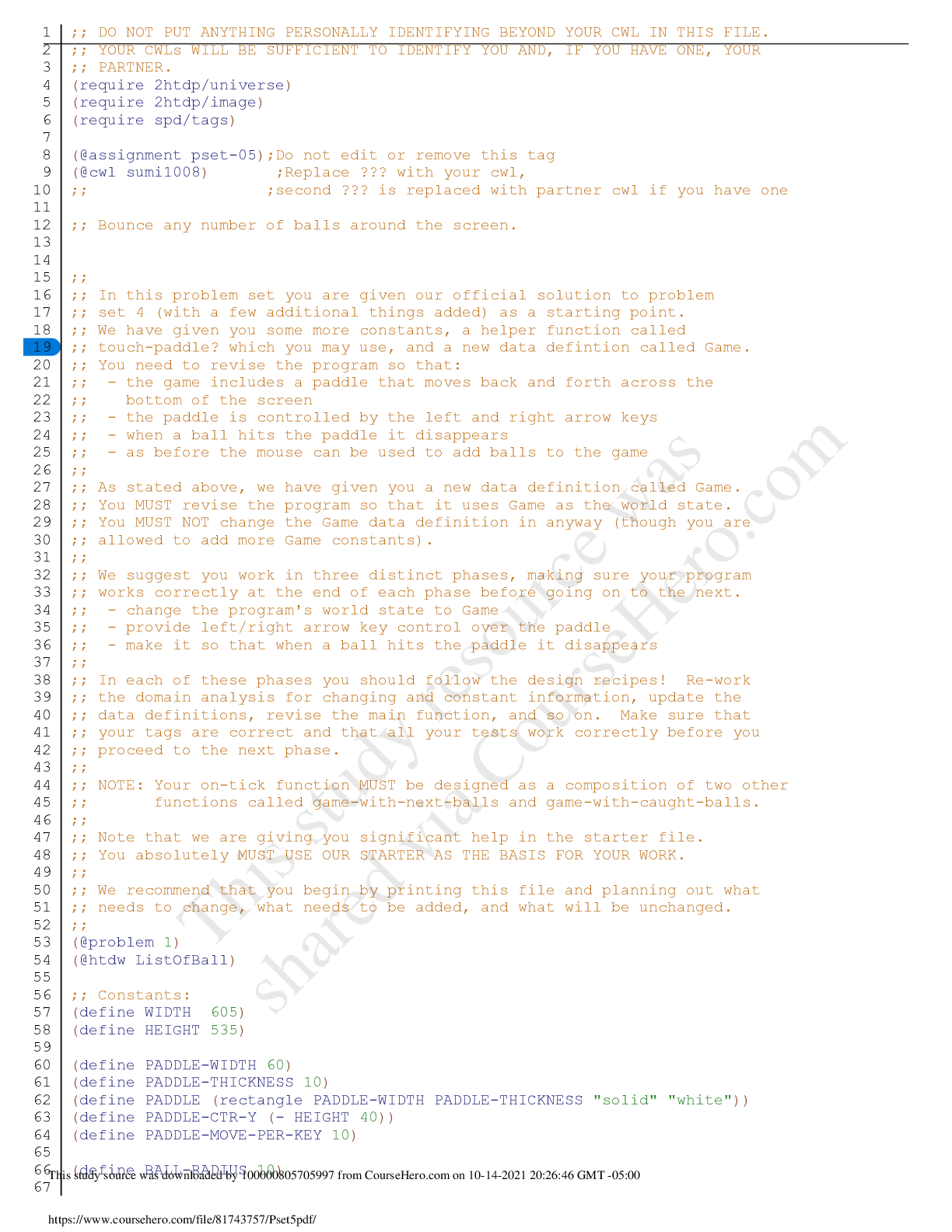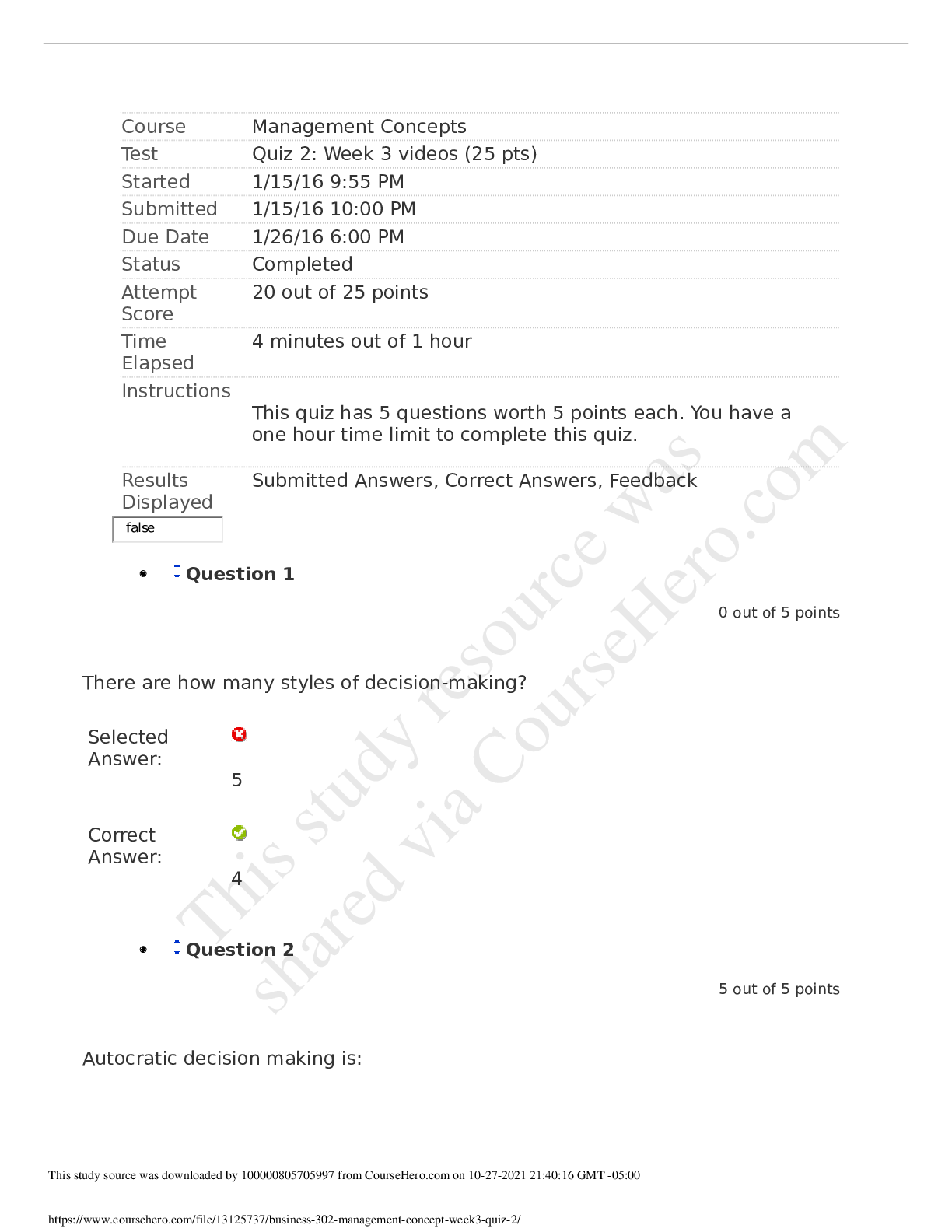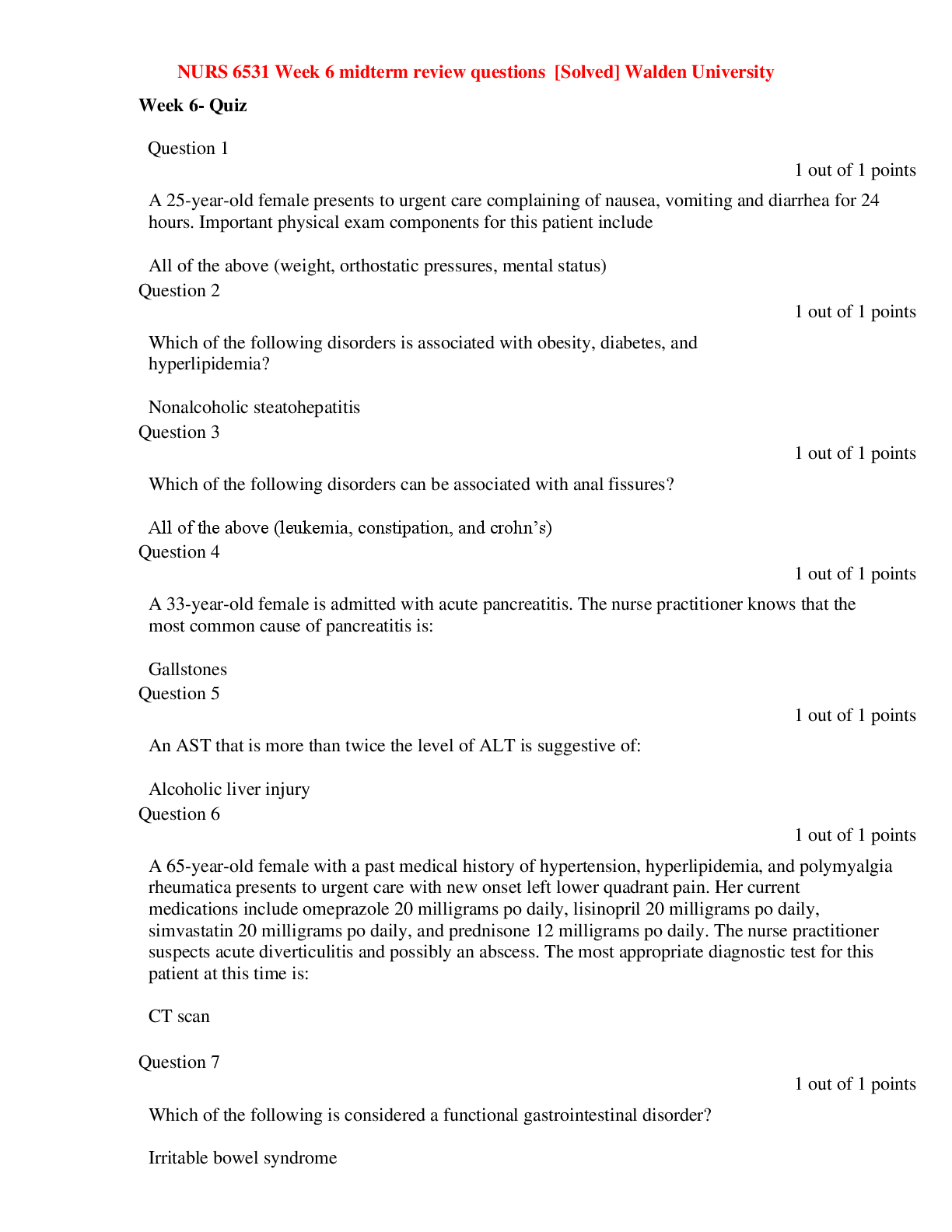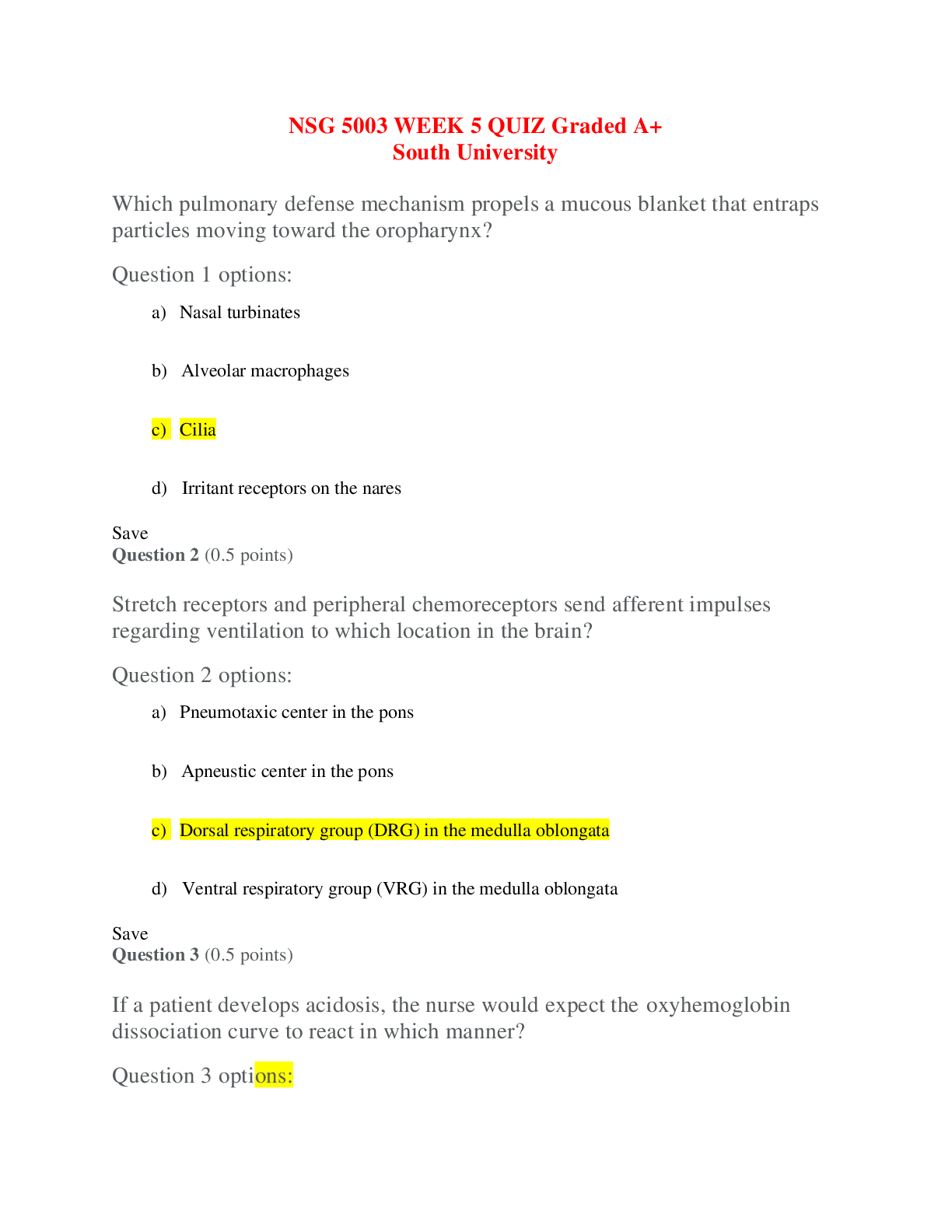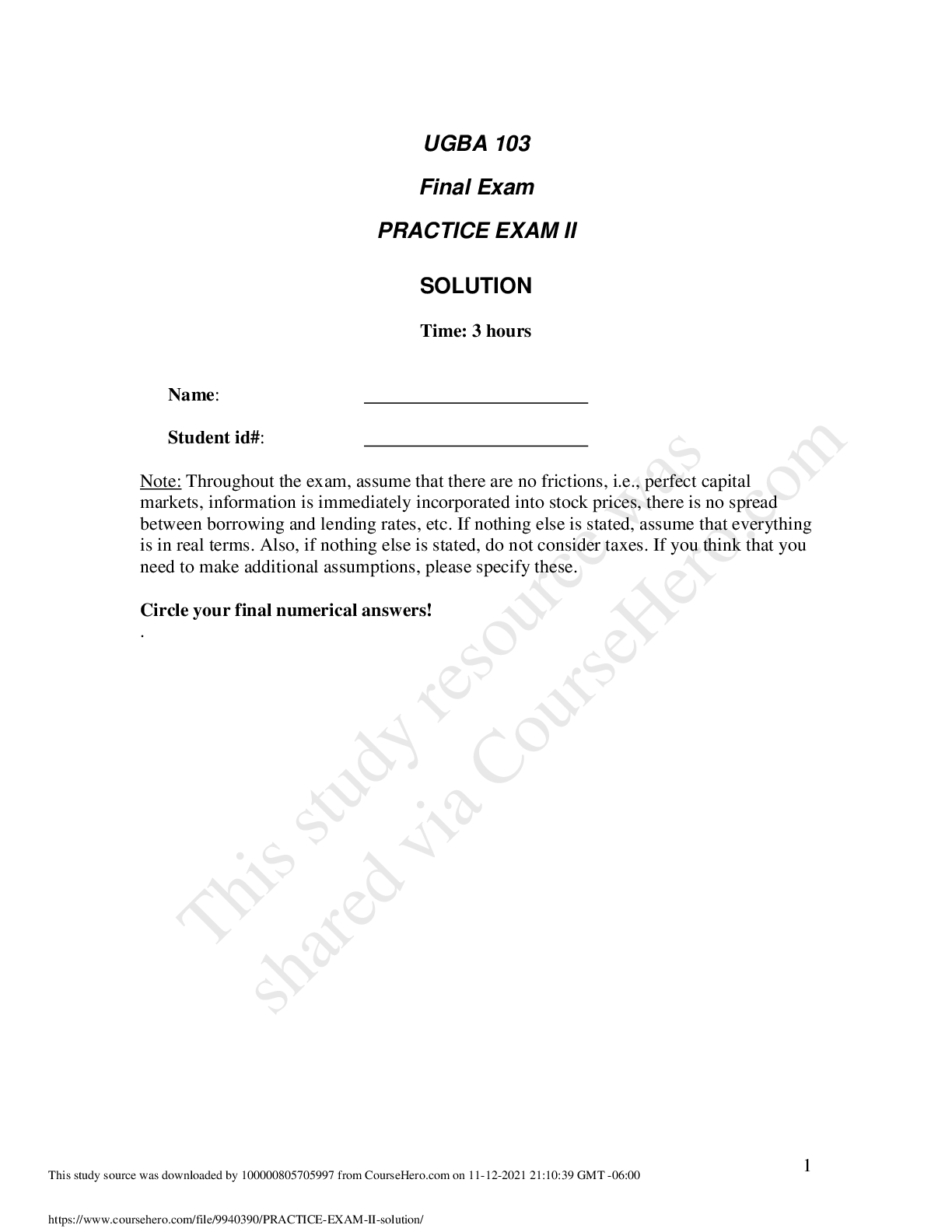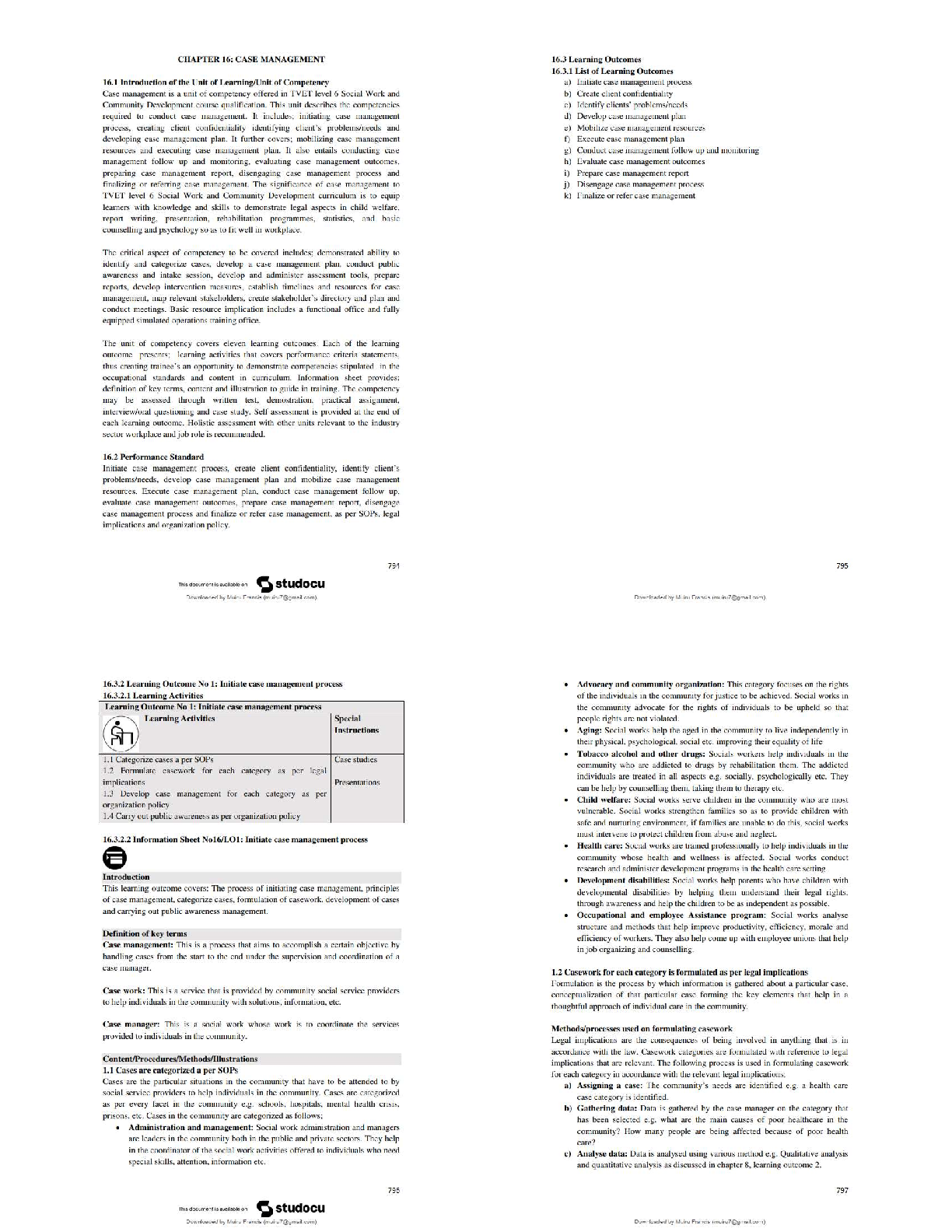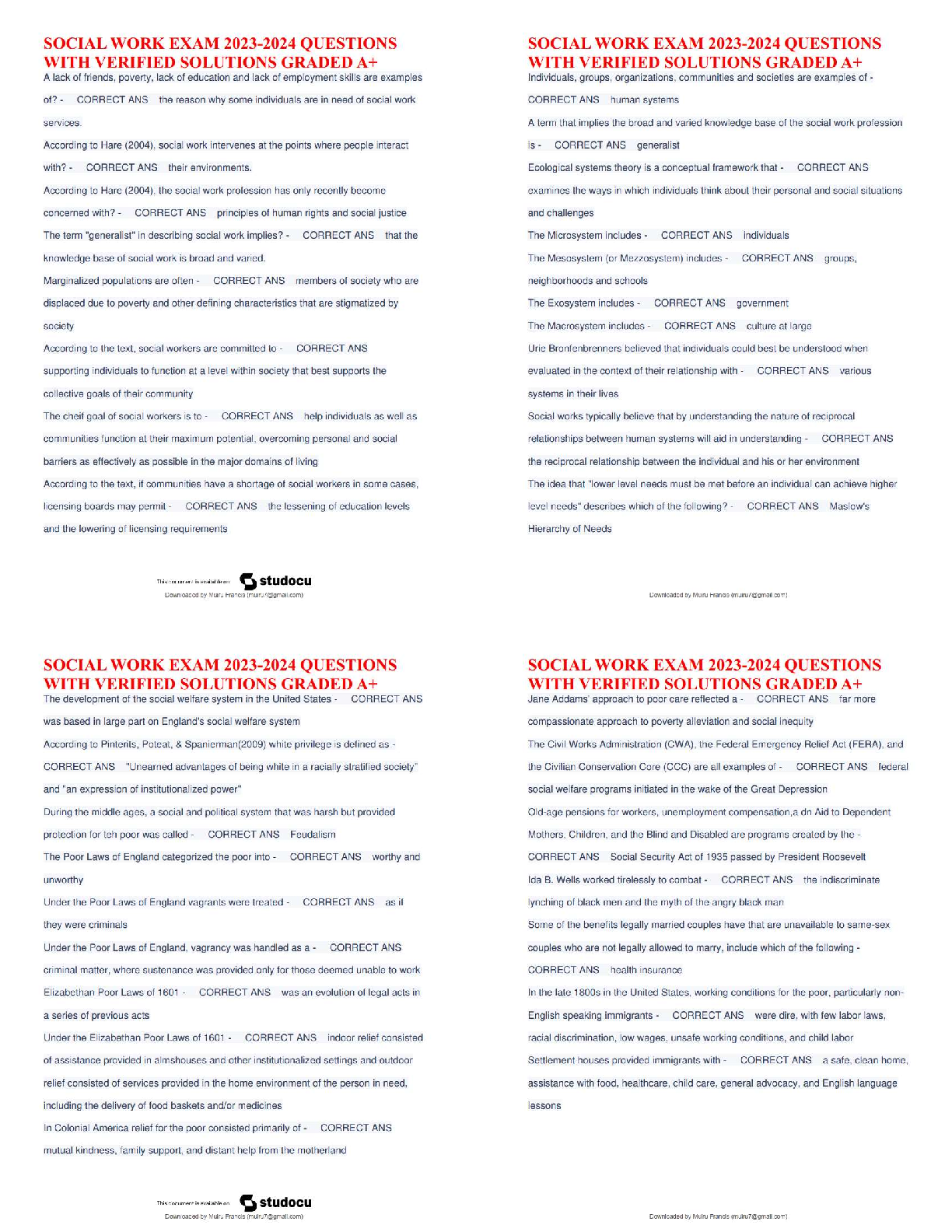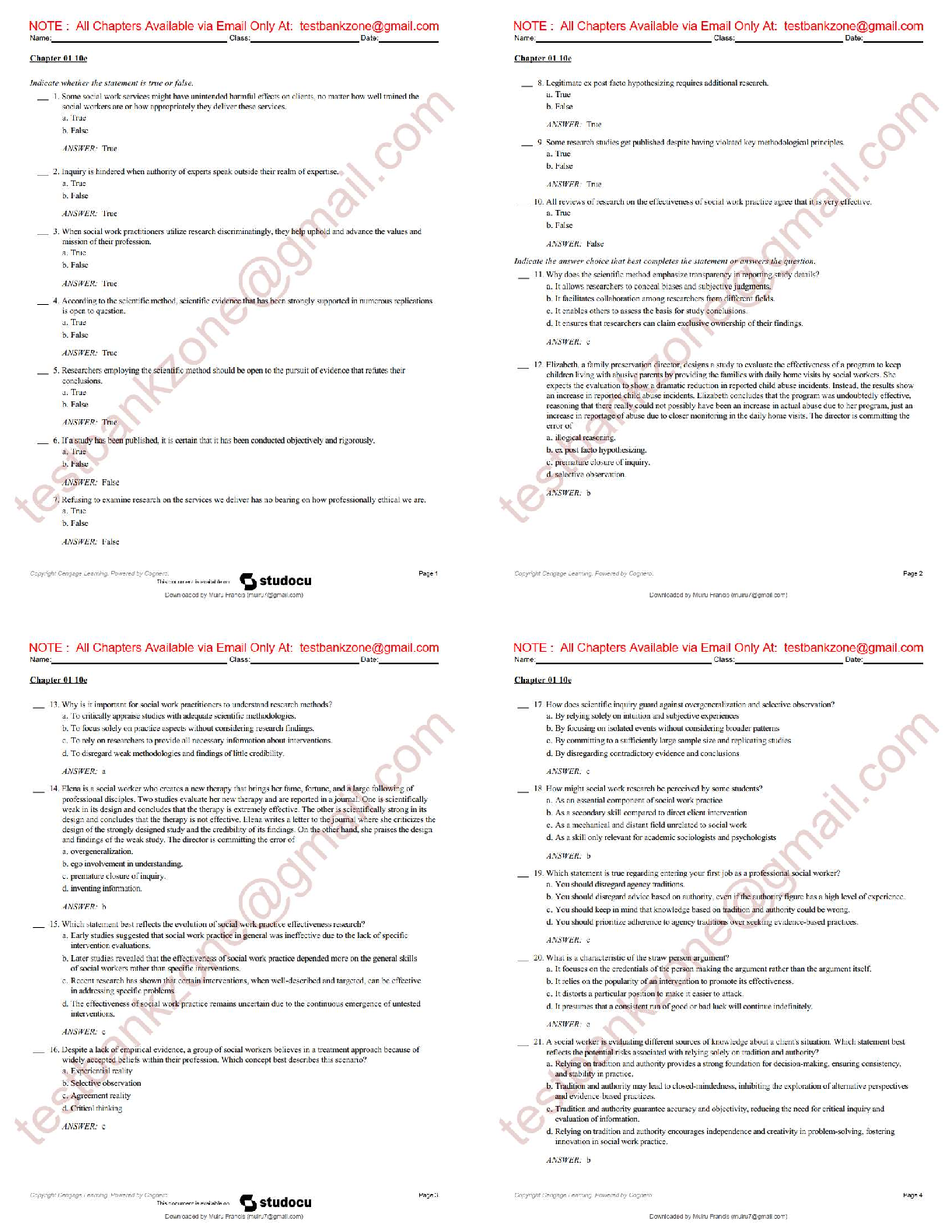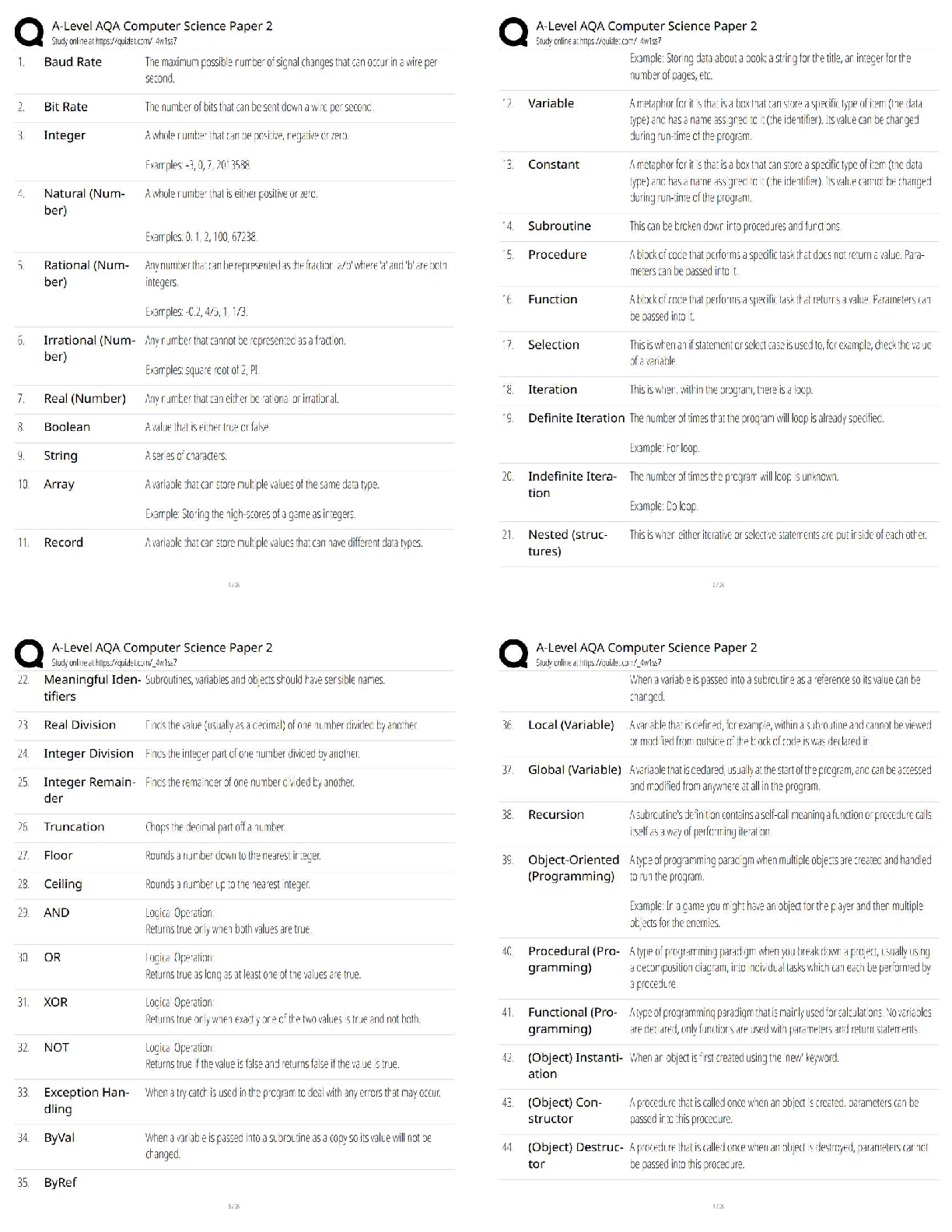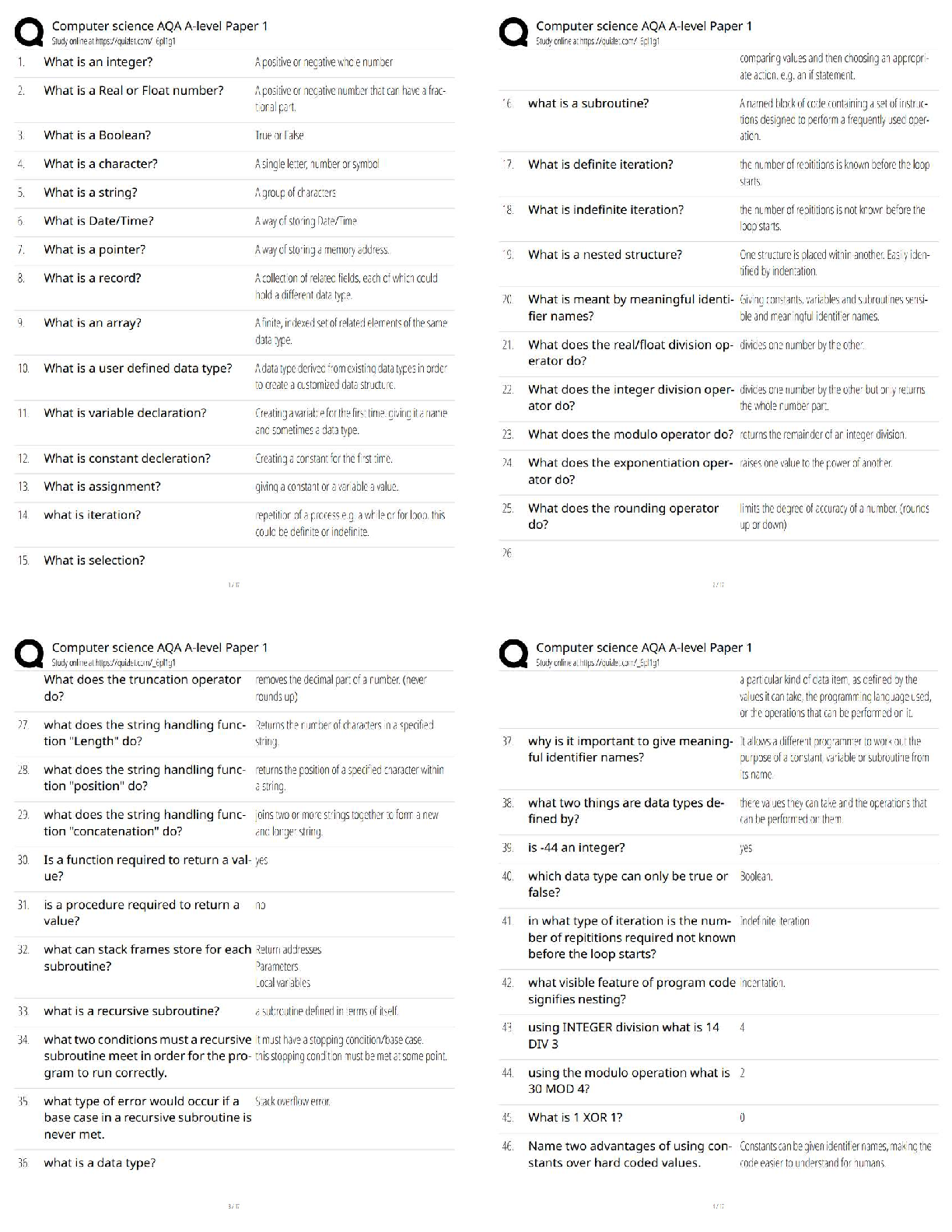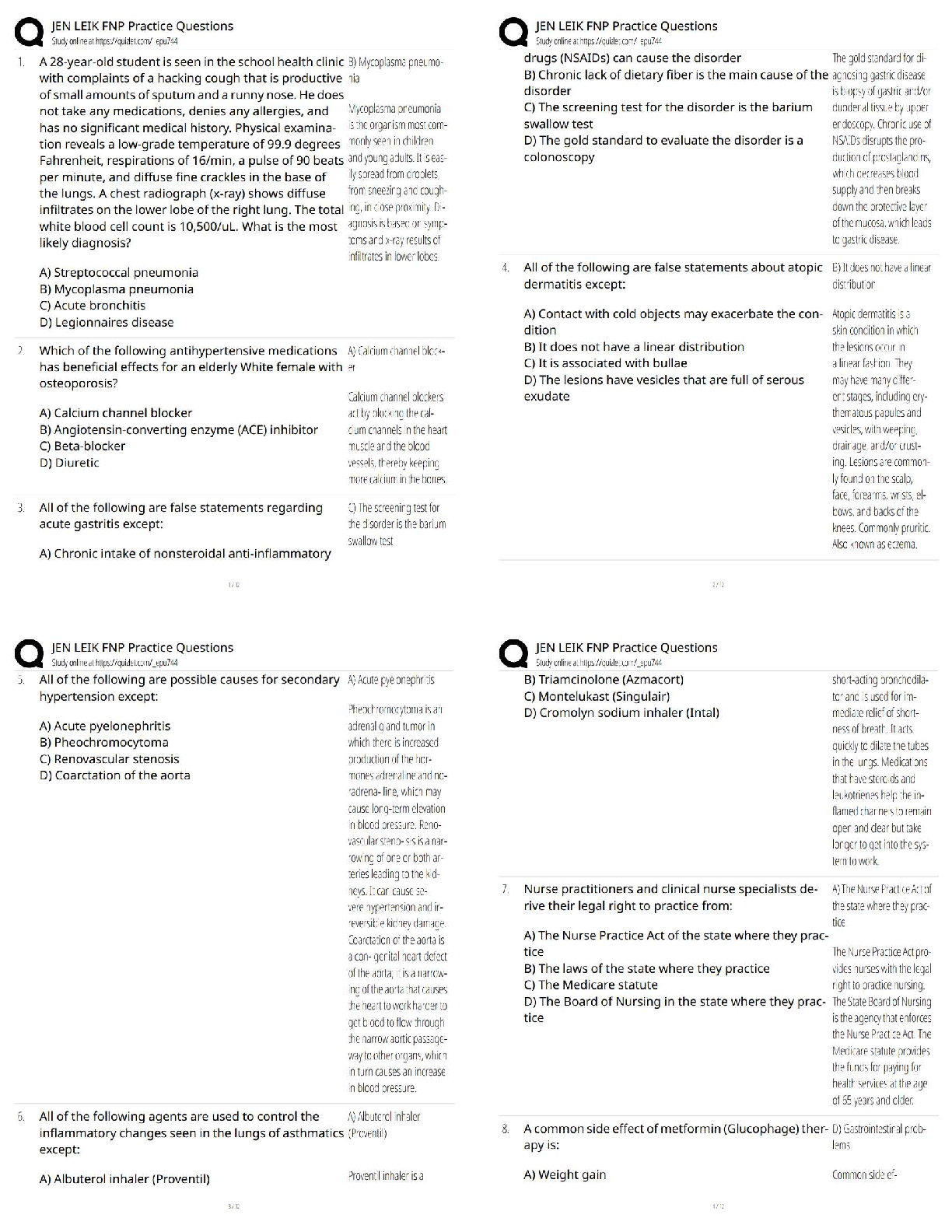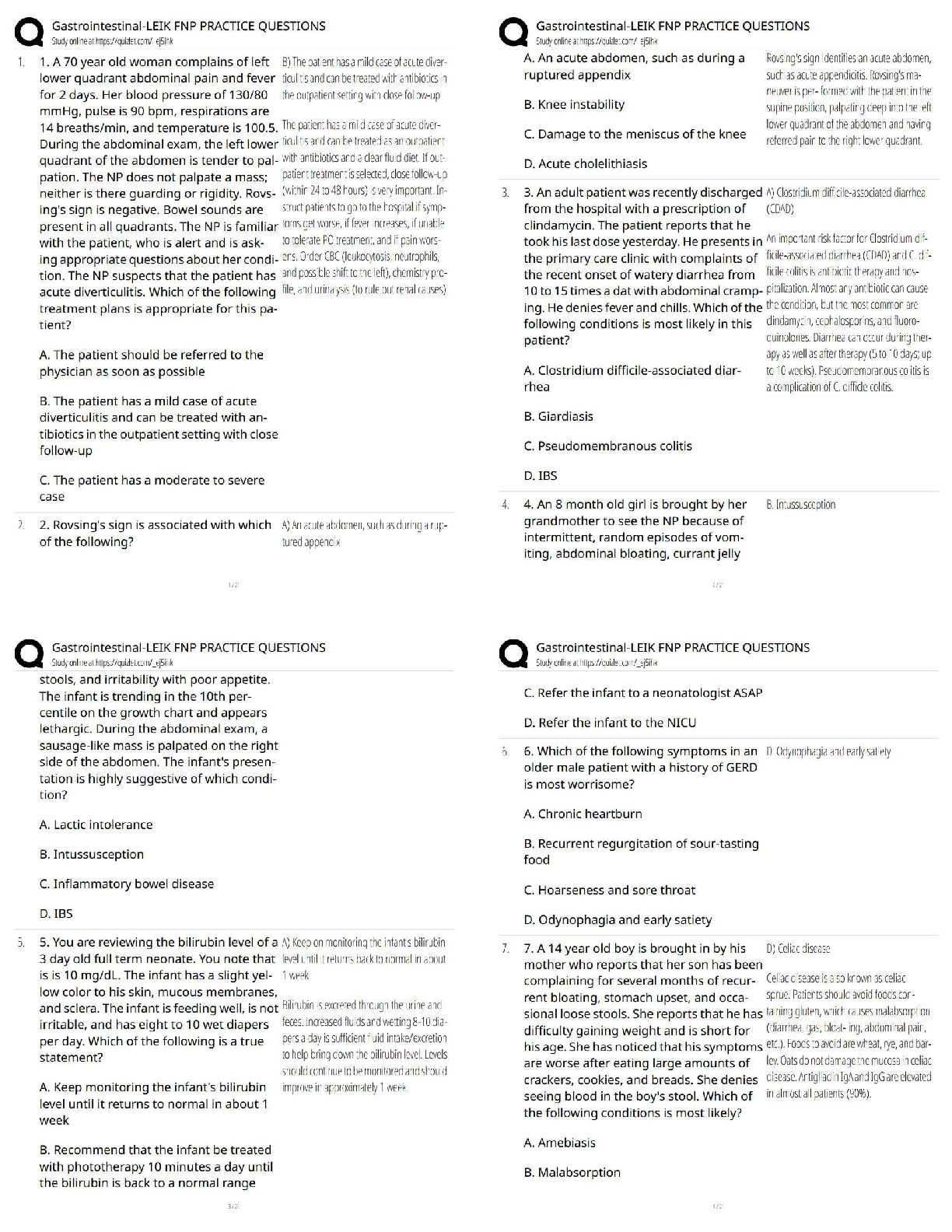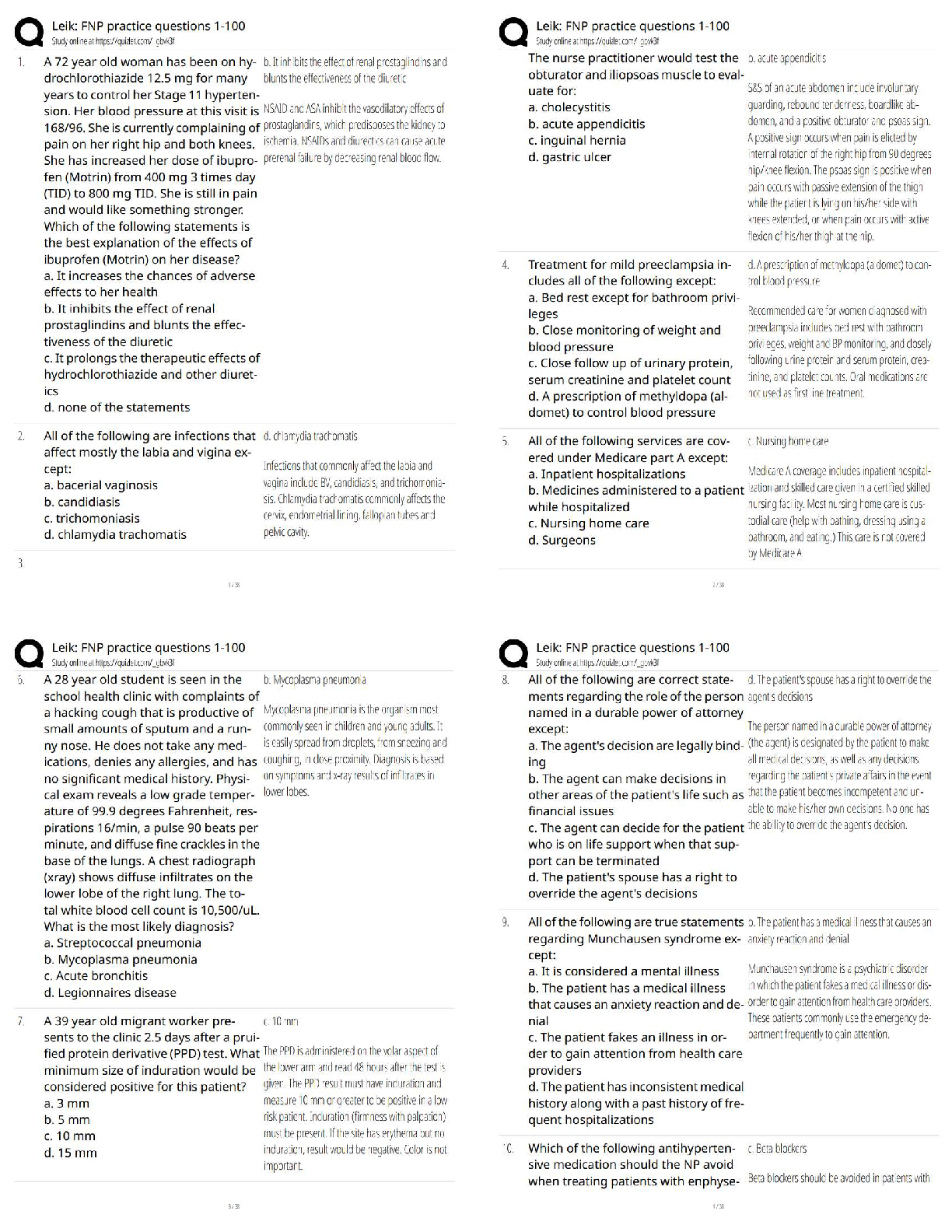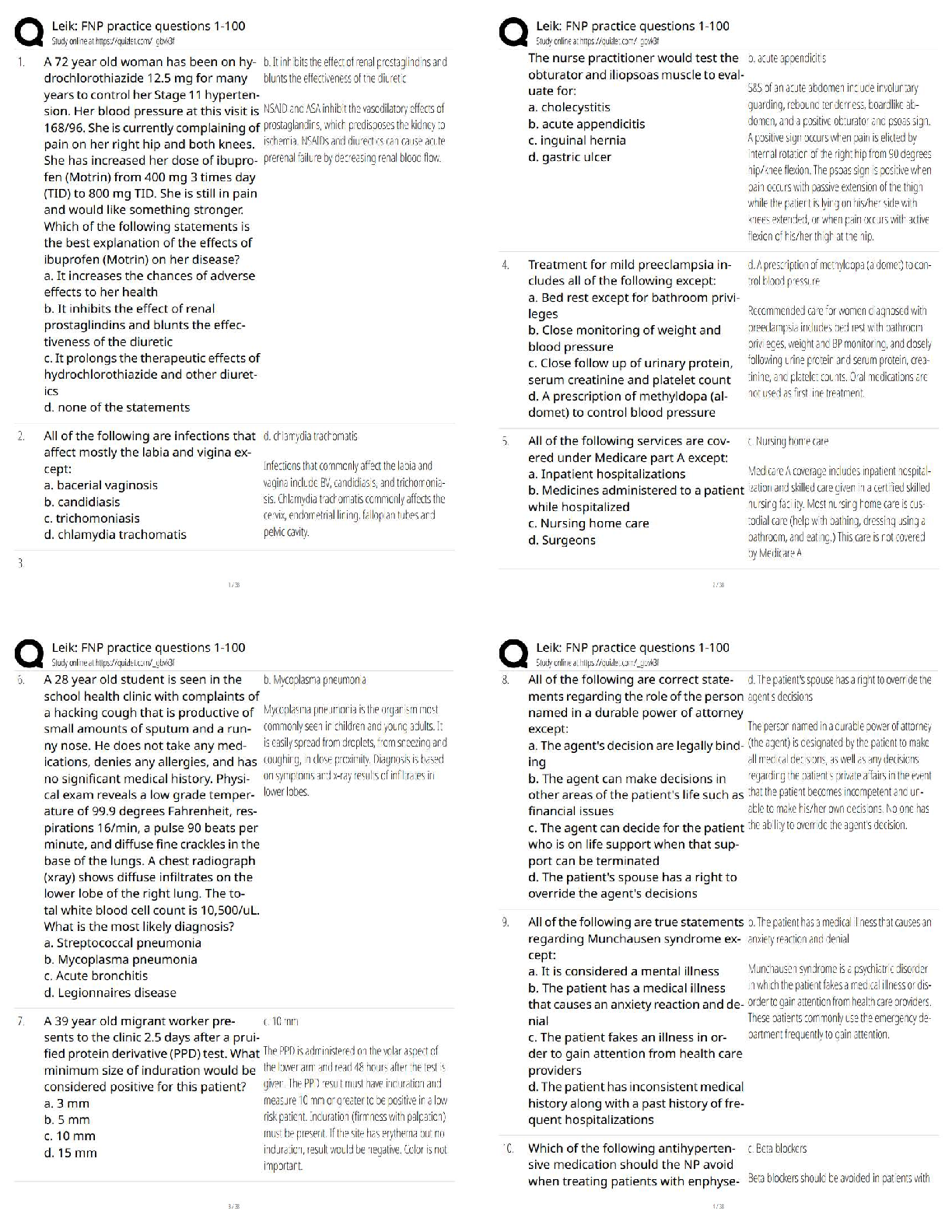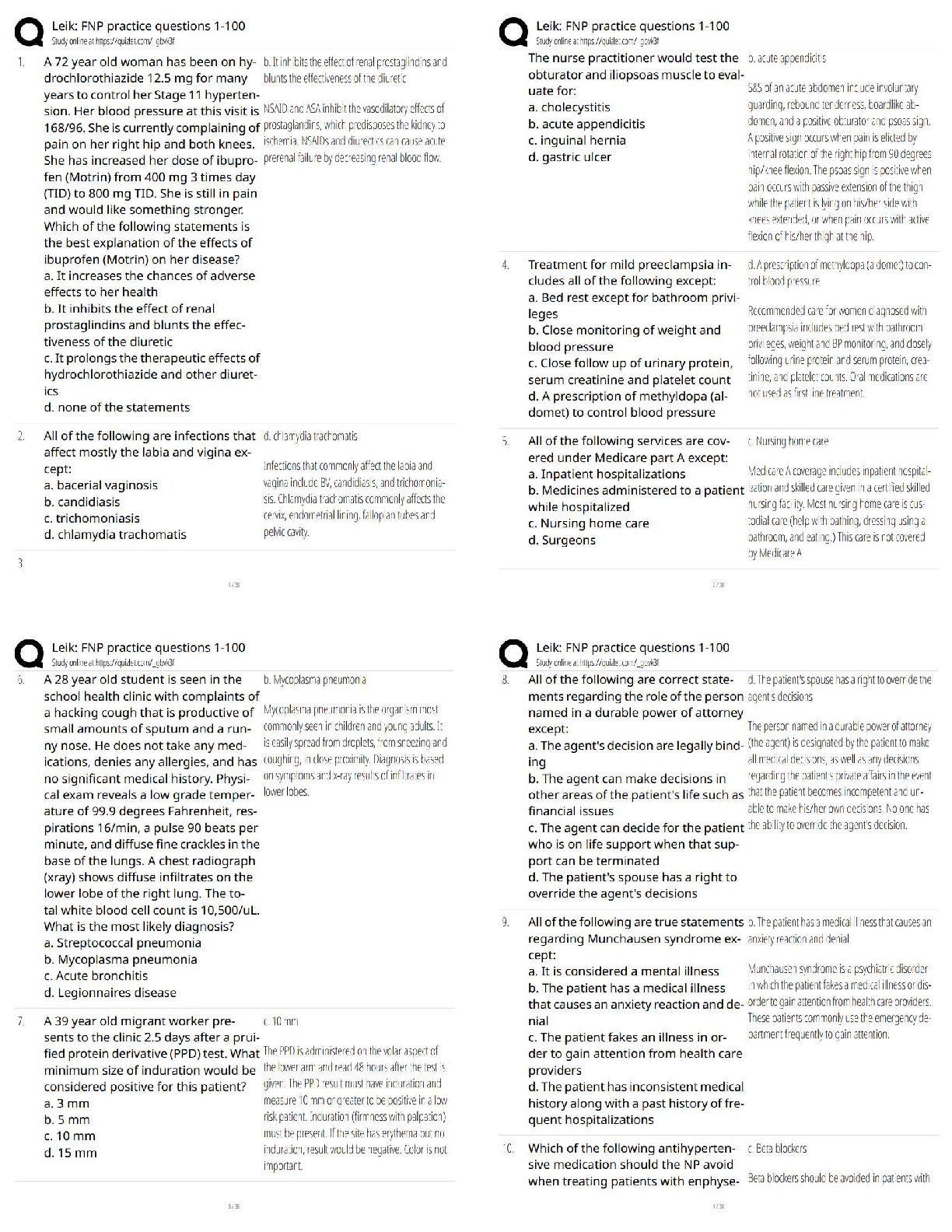Health Care > QUESTIONS & ANSWERS > [Solved] NURS 6501 13 Advanced Pathophysiology Week 6 Quiz 2019 (All)
[Solved] NURS 6501 13 Advanced Pathophysiology Week 6 Quiz 2019
Document Content and Description Below
NURS 6501N- 13 Advanced Pathophysiology Week 6 Quiz NURS 6501 13 Advanced Pathophysiology Week 6 Quiz 1. A 42-year-old female presents with dyspnea, rapid, shallowing breathing, ... inspiratory crackles; decreased lung compliance; and hypoxemia. Tests reveal fulminant form of respiratory failure characterized by acute lung inflammation and diffuse alveolocapillary injury. Which of the following is the most likely diagnosis the nurse will observe on the chart? 2. While reviewing lab results, to help confirm a diagnosis of cystic fibrosis in a 1-year-old child which substance will be present in the child’s sweat? 3. Which patient would the nurse assess for paroxysmal nocturnal dyspnea (PND)? A patient with: 4. A 25-year-old female recently underwent surgery and is now experiencing dyspnea, cough, fever, and leukocytosis. Tests reveal that she has a collapsed lung caused by removal of air from obstructed alveoli. What condition will the nurse observe on the chart? 5. A 57-year-old male presents with cough, sputum production, dyspnea, and decreased lung volume. He is diagnosed with pneumoconiosis. When taking patient’s history, which finding is the most probable cause of his illness? 6. A 53-year-old male with a 20-year history of smoking is diagnosed with emphysema. When the nurse is asked what causes this, what is the nurse’s best response? Changes in his lungs are caused by: 7. A nurse is preparing to teach the staff about asthma. Which information should the nurse include? Airway obstruction contributing to increased airflow resistance and hypoventilation in asthma is caused by: 8. A 42-year-old male was involved in a motor vehicle accident during which he suffered a severe head injury. He died shortly after the accident from loss of respiration. The nurse suspects the area of the brain most likely involved is the: 9. An 11-year-old female presents with a low-grade fever and cough. She is diagnosed with atypical pneumonia. What type of pneumonia does the nurse suspect the patient is experiencing? 10. A 22-year-old female presents with chronic bronchitis. Tests reveal closure of the airway during expiration. While planning care, a nurse recalls this condition is most likely caused by: 11. A 65-year-old female with emphysema presents to the ER for difficulty breathing. Physical exam reveals bluish skin and mucous membranes. How should the nurse chart this condition? 12. A 15-year-old female is diagnosed with restrictive lung disease caused by fibrosis. The has had a pulmonary function test. Which of the following findings is expected? 13. A 45-year-old male undergoes lung transplantation. He now suffers airway occlusion secondary to fibrosis. Which diagnosis will the nurse see on the chart? 14. A young patient is admitted to the pediatric unit with cystic fibrosis (CF) exacerbation. The nurse monitors the patient closely because the main cause of death in a child with CF is: 15. A 50-year-old diabetic male did not take his medication and is now in metabolic acidosis. He is experiencing Kussmaul respirations. What type of breathing will the nurse observe upon assessment? 16. When the pulmonologist discusses the condition in which a series of alveoli is the left lower lobe receive adequate ventilation but do not have adequate perfusion, which statement indicates the nurse understands this condition? When this occurs in a patient it is called: 17. A 30-year-old male is involved in a motor vehicle accident and sustains trauma to the lungs and chest wall. He experiences respiratory failure. Which of the following lab values would the nurse expect? 18. A 60-year-old female with a 25-year history of smoking is diagnosed with emphysema. She has an increased anterior-posterior chest diameter. The nurse attributes this finding to: 19. While planning care for a child with asthma, which of the following is a characteristic of asthma? 20. When the nurse is asked what causes asthma, how should the nurse respond? Asthma is thought to be caused by: 21. A geneticist is discussing cystic fibrosis (CF). Which information should be included? CF is an ______ disease. 22. A 14-year-old male is experiencing an asthma exacerbation. When reviewing the lab results, which of the following cells in the submucosa promote this inflammatory response and will be elevated? 23. A 60-year-old female with emphysema is having difficulty expiring a given volume of air. When giving report, the nurse will relay that the patient is most likely experiencing ______ pulmonary disease. 24. A 65-year-old male recently had a cerebrovascular accident that resulted in dysphagia. He now has aspiration of gastric contents. The nurse assesses the patient for which complication? 25. A 20-year-old male is in acute pain. An arterial blood gas reveals decreased carbon dioxide (CO2) levels. Which of the following does the nurse suspect is the most likely cause? 26. A 50-year-old male with a 30-year history of smoking was diagnosed with lung cancer. He was previously exposed to air pollution, asbestos, and radiation at his job. Which of the following should the nurse realize had the greatest impact on the development of his cancer? 27. A 53-year-old male with a 20-year history of smoking is diagnosed with emphysema. When a staff member asks why the patient’s airway are obstructed, how should the nurse respond? The airways are obstructed because of: 28. When the nurse observes a diagnosis of nonsocomial pneumonia, the patient generally acquires this pneumonia: 29. A 6-month-old female presents with rhinorrhea, cough, poor feeding, lethargy, and fever. She is diagnosed with bronchiolitis. Which of the following will the nurse most likely observe on the culture report? 30. A 28-year-old male reports to his primary care provider that he has had a cold for a week and is coughing up bloody secretions. When giving report, what term should the nurse use to describe this condition [Show More]
Last updated: 3 years ago
Preview 1 out of 3 pages
![Preview image of [Solved] NURS 6501 13 Advanced Pathophysiology Week 6 Quiz 2019 document](https://scholarfriends.com/storage/docx-(25).png)
Buy this document to get the full access instantly
Instant Download Access after purchase
Buy NowInstant download
We Accept:

Reviews( 0 )
$14.00
Can't find what you want? Try our AI powered Search
Document information
Connected school, study & course
About the document
Uploaded On
Nov 18, 2020
Number of pages
3
Written in
All
Additional information
This document has been written for:
Uploaded
Nov 18, 2020
Downloads
0
Views
101



.png)
